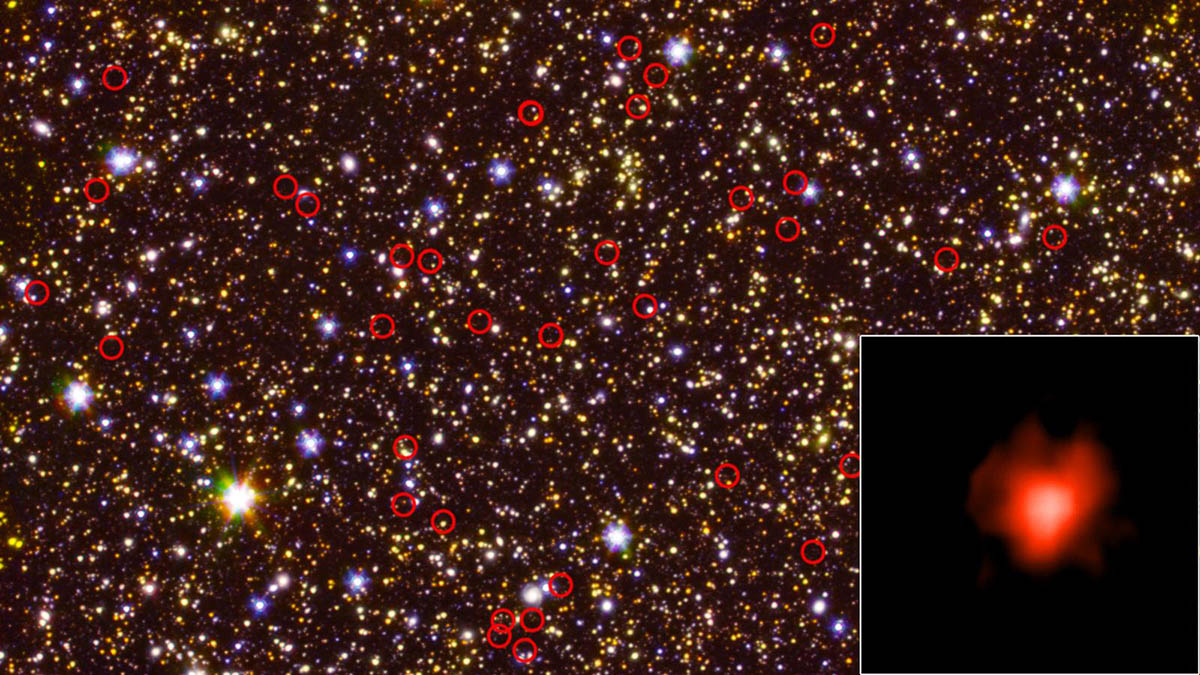This deep-field view of the sky (center) taken by NASA’s Hubble and Spitzer space telescopes is dominated by galaxies – including some very faint, very distant ones – circled in red. The bottom right inset shows the light collected from one of those galaxies during a long-duration observation. (NASA/JPL-Caltech/ESA/Spitzer/P. Oesch/S. De Barros/I.Labbe)
Home This deep-field view of the sky (center) taken by NASA’s Hubble and Spitzer space telescopes is dominated by galaxies – including some very faint, very distant ones – circled in red. The bottom right inset shows the light collected from one of those galaxies during a long-duration observation. (NASA/JPL-Caltech/ESA/Spitzer/P. Oesch/S. De Barros/I.Labbe) This deep-field view of the sky (center) taken by NASA's Hubble and Spitzer space telescopes is dominated by galaxies - including some very faint, very distant ones - circled in red. The bottom right inset shows the light collected from one of those galaxies during a long-duration observation. (NASA/JPL-Caltech/ESA/Spitzer/P. Oesch/S. De Barros/I.Labbe)
This deep-field view of the sky (center) taken by NASA’s Hubble and Spitzer space telescopes is dominated by galaxies – including some very faint, very distant ones – circled in red. The bottom right inset shows the light collected from one of those galaxies during a long-duration observation. (NASA/JPL-Caltech/ESA/Spitzer/P. Oesch/S. De Barros/I.Labbe)


